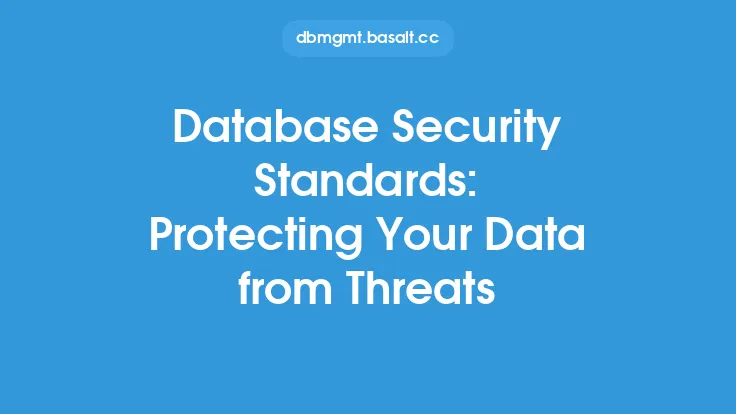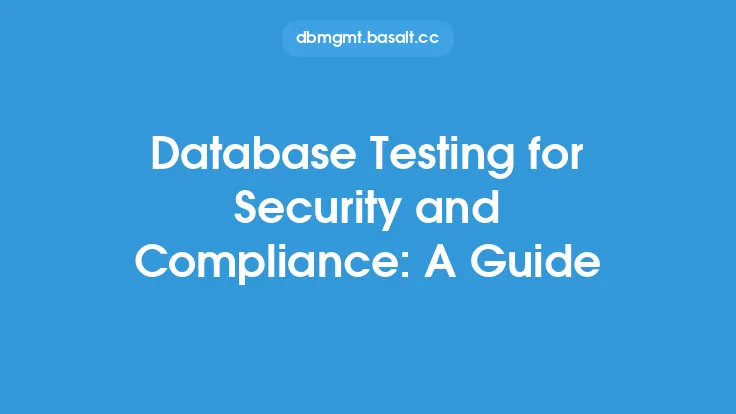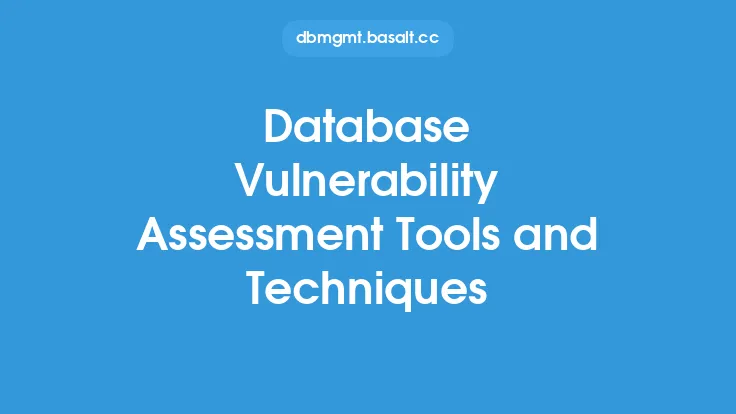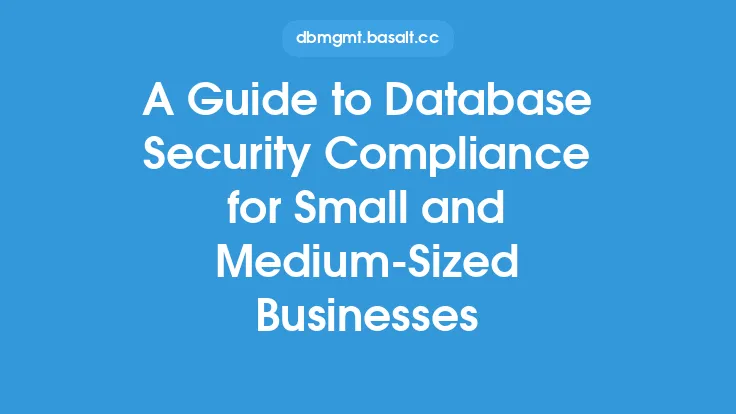Database security is a critical aspect of any organization's overall security posture, as databases often contain sensitive and valuable data. One of the key components of database security is vulnerability assessment and penetration testing, which helps identify and remediate potential security threats before they can be exploited by attackers. In this article, we will delve into the world of database security threats, vulnerability assessment, and penetration testing strategies, providing a comprehensive overview of the concepts, techniques, and best practices involved.
Introduction to Database Security Threats
Database security threats can come in many forms, including SQL injection attacks, cross-site scripting (XSS) attacks, and privilege escalation attacks. These threats can be launched by external attackers, such as hackers, or by internal threats, such as disgruntled employees or unauthorized users. Database security threats can have severe consequences, including data breaches, data tampering, and denial-of-service (DoS) attacks. To mitigate these threats, organizations must implement robust database security measures, including vulnerability assessment and penetration testing.
Understanding Vulnerability Assessment
Vulnerability assessment is the process of identifying, classifying, and prioritizing vulnerabilities in a database. This involves using various tools and techniques to scan the database for potential security weaknesses, such as outdated software, misconfigured settings, and insecure coding practices. Vulnerability assessment helps organizations understand their database's attack surface and identify areas that need improvement. There are several types of vulnerability assessments, including network-based assessments, host-based assessments, and application-based assessments. Each type of assessment provides a unique perspective on the database's security posture and helps organizations develop a comprehensive security strategy.
Penetration Testing Strategies
Penetration testing, also known as pen testing or ethical hacking, is the process of simulating a real-world attack on a database to test its defenses. Penetration testing involves using various techniques, such as social engineering, network scanning, and exploit development, to attempt to breach the database's security controls. The goal of penetration testing is to identify vulnerabilities that could be exploited by attackers and provide recommendations for remediation. There are several types of penetration testing, including black box testing, white box testing, and gray box testing. Each type of testing provides a different level of access to the database and its underlying systems, allowing testers to simulate various types of attacks and scenarios.
Vulnerability Assessment and Penetration Testing Tools
There are many tools available for vulnerability assessment and penetration testing, including open-source tools, commercial tools, and cloud-based tools. Some popular tools include Nmap, Nessus, and Metasploit. These tools provide a range of features, such as network scanning, vulnerability scanning, and exploit development, to help organizations identify and remediate security weaknesses. When selecting a tool, organizations should consider factors such as ease of use, accuracy, and cost. It's also important to note that no single tool can provide a comprehensive view of a database's security posture, and organizations should use a combination of tools to get a complete picture.
Best Practices for Vulnerability Assessment and Penetration Testing
To get the most out of vulnerability assessment and penetration testing, organizations should follow best practices, such as regularly scheduling assessments and tests, using a combination of tools and techniques, and involving stakeholders from various departments. It's also important to prioritize remediation efforts based on risk and to continuously monitor the database for new vulnerabilities and threats. Additionally, organizations should consider using external experts, such as penetration testers and security consultants, to provide an objective perspective on their database's security posture.
Common Database Security Threats
There are several common database security threats that organizations should be aware of, including SQL injection attacks, cross-site scripting (XSS) attacks, and privilege escalation attacks. SQL injection attacks involve injecting malicious code into a database's SQL queries, allowing attackers to access sensitive data and disrupt database operations. XSS attacks involve injecting malicious code into a web application, allowing attackers to steal user credentials and sensitive data. Privilege escalation attacks involve exploiting vulnerabilities to gain elevated privileges, allowing attackers to access sensitive data and disrupt database operations.
Database Security Threats and Countermeasures
To mitigate database security threats, organizations should implement various countermeasures, such as input validation, error handling, and access control. Input validation involves checking user input to prevent malicious code from being injected into the database. Error handling involves implementing robust error handling mechanisms to prevent attackers from gaining sensitive information from error messages. Access control involves implementing robust access controls, such as authentication and authorization, to prevent unauthorized access to the database.
Conclusion
In conclusion, database security threats are a significant concern for organizations, and vulnerability assessment and penetration testing are critical components of any database security strategy. By understanding the concepts, techniques, and best practices involved in vulnerability assessment and penetration testing, organizations can identify and remediate potential security threats before they can be exploited by attackers. Additionally, by implementing various countermeasures, such as input validation, error handling, and access control, organizations can mitigate common database security threats and protect their sensitive data. Regular vulnerability assessment and penetration testing can help organizations stay ahead of emerging threats and ensure the security and integrity of their databases.





